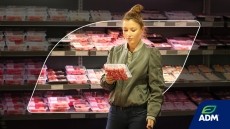Faba bean: The sustainable protein of the future?

The faba bean – locally grown in Mediterranean countries as well as Canada, Africa and Asia and also known as the broad bean – has been used by the VTT Technical Research Centre of Finland to develop high-protein breads, pasta and snacks as part of a wider EU project on sustainable proteins.
The center developed breads containing 25-35% protein using fermented faba bean flour and maize flour - a protein level twice that of typical wheat, it claimed.
Speaking to BakeryandSnacks.com, senior scientist at VTT Nesli Sozer said faba bean was extremely promising, particularly amid the EU’s push to prioritize sustainable protein alternatives.
“Now there is this protein boom, and of course there is soya but then there is issues like GMO with soya – it’s quite difficult to find GMO-free soya. Another alternative is peas, but for example, pea might also have some flavor-related impact on the food,” she said.
Faba bean flour, however, added diversity and was also considerably cheaper than peas and soybeans – “about half the price”, she said.
“It’s not a common ingredient to everyone, although it’s quite popular in Middle Eastern countries like Egypt. But I think it’s similar to quinoa – if you think about three or four years ago, quinoa was not so popular but now it’s quite a trendy ingredient and not just for celiac consumers.”
Fermentation for added nutrition
VTT used 70% faba bean flour and 30% maize flour to make the gluten-free breads. Sozer said that using a higher percentage would likely cause a drop in bread volume, as well as a harder texture.
The team also experimented with fermentation to improve the nutritional profile of the end bread product. They tested fermentation of 14-24 hours, but Sozer said this could be altered according to what taste profile the manufacturer wanted.
“With fermentation, you’re able to lower the starch hydrolysis to even lower levels and then also increase the level of available free amino acids,” she explained.
The lower starch digestibility would likely lower the GI of the bread too, she said, although no in vivo studies had been conducted to prove this.




























